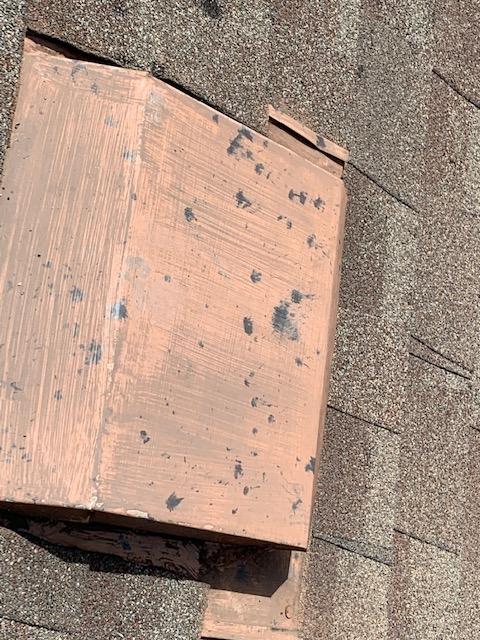A hail storm ripped through Georgetown last Wednesday. With stones the size of baseballs, the hail reached 2.75 inches in diameter. Now, hundreds of people are assessing the damage that has been done to their homes and vehicles.
Residents in the northwestern parts of Georgetown -- near Sun City and Serenada -- were hit hardest.
If you live in the Georgetown area and want to fix roof damage from a hail storm, read on as we’ll go over the most important things you need to know about roof damage from hail storms..
Most people worry about their trucks and cars during a hail storm. But what they don't realize is that their roof is vulnerable to serious hail damage as well. In the middle of a hail storm, your roof can get damaged just as much as your vehicles.
The particular amount of damage highly depends on numerous factors. In any case, the worst scenario is waiting for your roof to start leaking. It's much better to inspect the roofing quickly after the hail storm.
You'll know how to properly identify hail damage and what steps to take for fixing your roof.
#1: What affects the extent of hail damage?
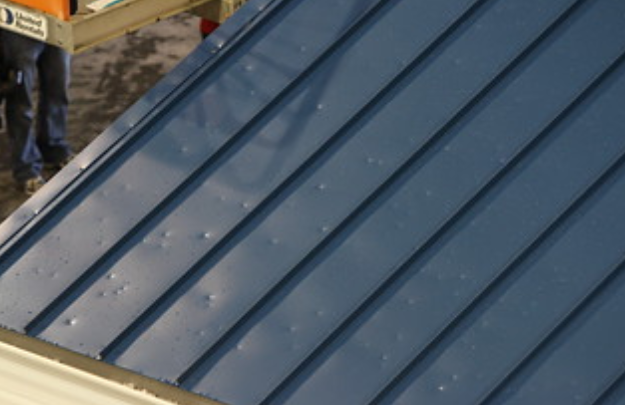
For starters, let's look at the main factors that shape the type and extent of roof damage from hailstones.
Roofing materials: The damage acquired is linked to the material of your roofing. For instance, hailstones can cause cracks in components made of vinyl and dings in aluminum. The age and level of upkeep of your roof materials shape the outcome as well. Older and less maintained roofing may be more receptive to serious damage.
Wind: When your home takes a beating from a hail storm, the wind speed and direction are important factors. Strong wind gusts increase the chance of significant damage to your roof.
Near-by structures: Your home and its roof may be protected by natural barriers. There are many possible structures close to your home that offer some safety from the hailstorm. For instance, fences, other buildings, and tree cover all carry the potential of lessening the storm impact.
Hailstones: The size and density of hailstones greatly dictate the degree of roof damage. Tiny hailstones are much less likely to cause worry. But it's no secret that hail storms can produce hailstones that are the size of a softball. Add enough force in the form of wind speed and these huge hailstones could puncture your roof.
#2: What are the signs of roof damage after a hail storm?
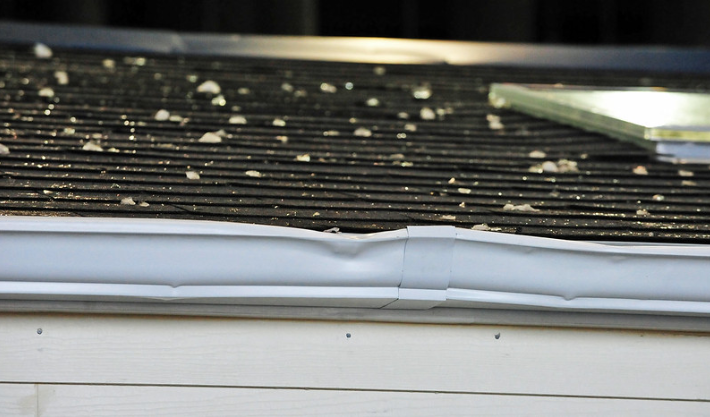
When it comes to signs of roof damage, there are going to be variations depending on the material used to build your roof. For instance, hail damage on composite or asphalt shingles looks different from damaged wood shingles.
However, there are some universal signs that indicate your roof acquired damage during the hail storm:
- Skylight damage: Check your skylights for cracked or broken glass.
- Missing shingles: See if any shingles have gone completely missing during the hail storm.
- Roof vent damage: Your roof vents are likely to consist of lightweight metal. When you see dents in these components, it's clear that the hail storm took a toll on your roof.
- Gutter leaf guard issues: Sometimes the leaf guards deform when getting hit by heavy hail.
- Punctures in soft materials: Your roofing could have components made of soft materials such as PVC. See if these have been punctured.
- Metal roof dents: Do you have a metal roof? Look for any dings and dents in the metal.
- Shingle damage: Regardless of your shingle material, any holes, displacement, bruises, curling, and cracks demonstrate the damaging effects of hailstones.
- Satellite dish: Your satellite dish could be a great indicator for determining how serious the hail storm was. Damaged parts or chipped paint indicate that your roofing may have gotten damaged as well.
#3: How to handle roof damage from hail storms?
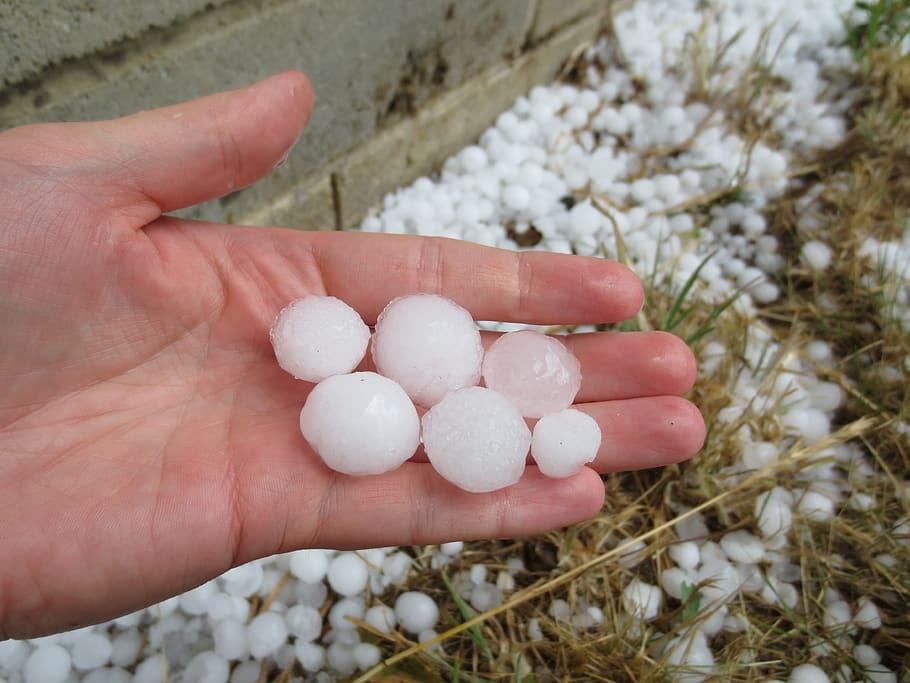
The first step is reporting the hail damage to your insurance company. Call them and let them know that your roof has been damaged by a hail storm. This call kickstarts the claims procedures.
After the call, the company's inspector will arrive on the scene. This person will check the damage while assessing the need and extent of repairs. Then your insurer will let you know what sort of repairs will be covered with your claim.
Keep in mind that your insurance company may not fully cover the associated expenses. The repair costs may be higher due to local variations on billed working hours and roofing materials. You have to pay for this difference.
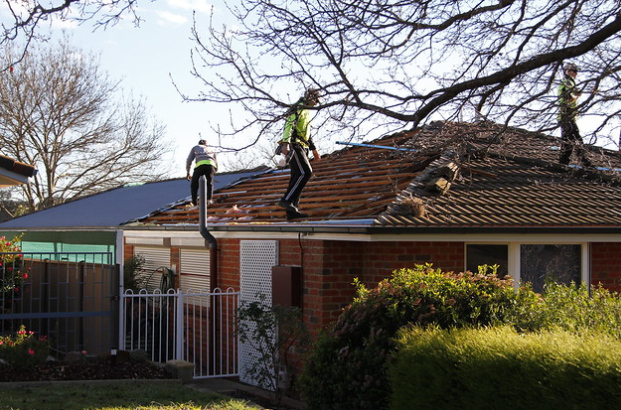
The second part of handling roof damage involves finding a great roofing contractor. It's better to find a contractor with prior experience in dealing with hail damage insurance claims.
You may receive significant support in obtaining the full amount needed for complete repairs from this contractor. The key is to get a comprehensive roof and siding inspection. This document contains all the information you need to prove your case and claim the full pay out.
However, note that these negotiations are never easy. When you work together with a highly experienced roofing contractor, it's possible to raise the chances of winning the dispute and landing a successful claim.
The Bottom Line: Handling Roof Damage from Hail Storms
Hail storms can result in significant roof damage. These are the steps you should take to handle this damage:
- Check your roof and siding for signs of hail damage.
- Report the damage to your insurance company.
- Find a roofing contractor who is experienced with insurance claims.
- Try to get a full pay out for your roof repair needs.
This post was written in conjunction with McCaw Property Management.

